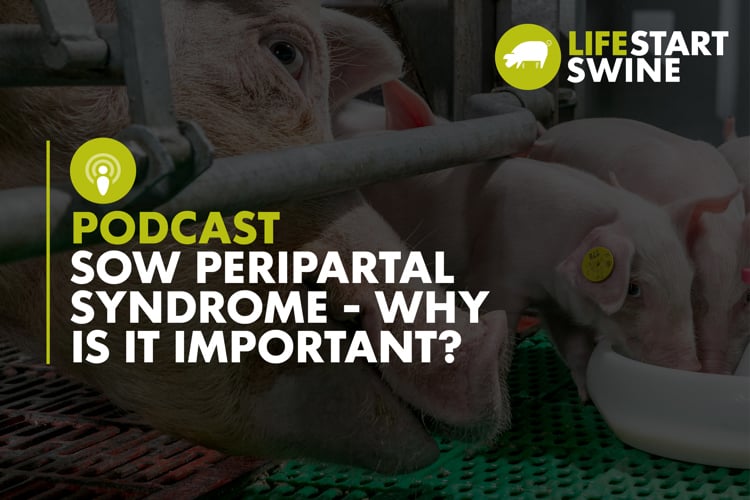
Pieter Langendijk, senior research scientist with Trouw Nutrition, speaks to LifeStart Swine about trends in sow management and how that can impact piglets. Langendijk has worked for Trouw Nutrition for seven years focusing on sow R&D, specifically looking at how nutrition can improve sow performance.

Trends in sow management
Looking at trends in prolificacy over the last 20 years, genetic selection has increased litter size remarkably. Europe has gained about four to five piglets in the last 20 years. Some genetics have seen an increase of up to seven or eight piglets over the last 20 years. This increase in litter size presents a real challenge when it comes to managing sows, not only for the sows but also for the people working with sows.
Farrowing order matters
With increasing litter size, the extra piglets that have been added to the litter over the last 20 years are mostly smaller piglets. Thus, the increase in number of piglets has come at a cost of birth weight. The average birth weight has dropped over the last 20 years along with the variation in birth weight within a litter. We're dealing with larger litters, but also at the same time, more small piglets and that's the real challenge.
“Just imagine that you are a small piglet in a large litter,” said Langendijk. “Because the litter is large, it takes longer for the sow to farrow the litter which poses health challenges to the piglets, especially the ones born at the end of the farrowing process. By the time the last ones in the litter are born, they have probably suffered from oxygen insufficiency and are born in a challenged condition.”
Once born, piglets will start looking for the udder to start consuming colostrum. At the same time, the rest of the litter is already at the udder. The piglet who is last in the farrowing process will have to compete with brothers and sisters for a finite amount of colostrum, which is already starting to dry out because the earlier born piglets have drunk two-thirds of the colostrum already. If you are the small piglet suffering from oxygen insufficiency and trying to get to the udder, it is a real challenge to survive the first days in life.
Managing big litters on-farm
The key strategy to reducing piglet mortality is tackling birth weight.
“We need to improve access of piglets to colostrum, and we need to create an environment for those small piglets in the first days of life to improve their chances of survival,” he explained. “There are ways to improve birth weight nutritionally. During gestation, we can develop concepts that improve placenta size, but also fetal development towards the end of gestation to increase the average birth weight but also hopefully to reduce the weight variation within the litter.”
Another strategy is to improve colostrum production by the sow. One way is to increase the feed allowance in the last days before farrowing.
“Normally when we move sows from the gestation unit to the lactation unit, people tend to drop the feed allowance, which is strange because research tells us that if we bump up the feed level, we actually see an increase in colostrum production,” he noted. “We know that even for that small piglet at the end of the farrowing process, there may be insufficient amount of colostrum available. So by bumping up the feed allowance it’s possible to improve the chance of survival for the late-born piglets.”
Another option is to improve the microenvironment. For example, that would include things like providing a temperature source. Use of a heat mat or a heat lamp light can ensure that when piglets are born, they dry up quickly and don't lose too much heat and experience a temperature drop.
“Lastly, I would like to mention fostering strategies. If a sow gives birth to 20 piglets, she's obviously not going to be able to feed all 20,” he said. “You need to put fostering strategies in place to accommodate the surplus of piglets either by moving them to other sows or creating mixed litters or provide supplemental feeding. Natural colostrum is always the best thing for a piglet, but if that's limited, then you need to find other ways to get supplemental nutrition into the piglet.”
Research indicates that piglets that consume less than 250 grams are more likely to die in the first week of life, thus 250 grams is the minimum threshold for intake.



